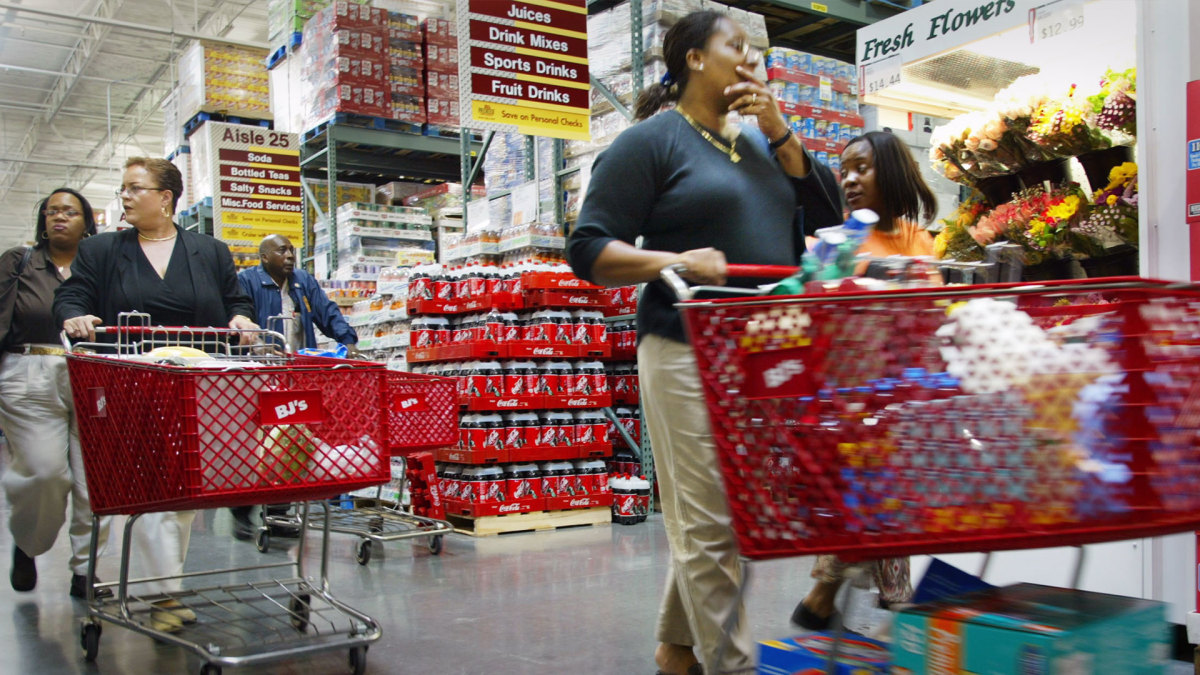BJ’s Wholesale Club (BJ) is starting to suffer from a growing problem in its stores, and its CEO recently called out the main sources of the issue.
In BJ’s second-quarter earnings report for 2025, it revealed that its membership numbers grew to a record 8 million. This comes after the warehouse club hiked its membership fees earlier this year. Its basic tier increased by $5, making the plan $60 a year, while its Club+ membership spiked from $110 to $120.
💵💰Don’t miss the move: Subscribe to TheStreet’s free daily newsletter 💰💵
While BJ’s welcomed more members during the quarter, its foot traffic in stores increased by 5% year-over-year, beating Costco, which only saw its store visits climb by 3.2%, and Sam’s Club, whose visits grew 1.6%, according to recent data from Placer.ai.
Related: Ross Stores plans a harsh change shoppers will notice in stores
Despite recent growth in members and foot traffic, BJ’s flagged in its earnings report that its comparable club sales decreased 0.3% year-over-year due to “the declining retail prices of fuel.”
The national average price of gas began declining in April last year. Currently, the national average price of a gallon of gas is around $3.18, increasing competition for BJ’s, which exclusively offers members low prices on gas.

Image source: Monika Graff/Getty Images
BJ’s CEO raises red flag about an alarming problem in stores
During an earnings call on Aug. 22, BJ’s CEO Bob Eddy said that the company’s performance during the quarter was also impacted by “macro uncertainty” and “unseasonably wet and cold weather” in core Northeast and Mid-Atlantic markets.
This contributed to BJ’s general merchandise sales declining by 2.2% year-over-year, while services remained flat.
“Certain higher-ticket discretionary categories in GM (general merchandise), such as recreation and lawn and garden, experienced double-digit declines in comp sales,” said Eddy.
He also flagged that members are growing “more cautious” about their spending in stores as they become more concerned about economic pressures such as tariffs and inflation.
Related: Walmart makes drastic move to keep customers from fleeing stores
“We did see members across all income levels turn a bit more cautious during the quarter, driven by the uncertain macro environment,” said Eddy. “Despite this change in consumer sentiment, our members continue to count on BJ’s, and total spending increased in total and on a per-member basis, with low-income households demonstrating incredible loyalty.”
Eddy noted that even though members are increasing their spending, they are “really frustrated” and “a little bit concerned” about the state of the economy, which is pushing them to seek more value as they make purchases.
“Their propensity to use coupons or to react to deals is a bit higher,” said Eddy. “You know, certainly looking at private label a little bit more than they have in the past, which may be good for us in the long term, but it could be an indication of consumer stress out there. Discretionary categories were more impacted than the nondiscretionary, which, again, was not too much different from the first quarter.”
Consumers are making drastic changes to spending amid tariff threat
The shift in customer behavior comes as many Americans are concerned about President Donald Trump’s tariffs (taxes companies pay to import goods from overseas) causing higher prices for everyday goods and services.
A recent survey from market research company Numerator found that 87% of consumers are worried about tariffs putting a dent in their finances.
Also, 80% of consumers are changing their shopping habits in response to tariffs by delaying nonessential or expensive purchases, buying less imported goods, searching for sales and coupons, and switching to shopping at lower-priced retailers and discount stores.
More Retail:
- Target has another big problem amid alarming customer behavior
- Dollar General announces big store change to win back customers
- Amazon pulls the plug on a free service for customers
These concerns were exacerbated after higher tariff rates went into effect on Aug. 7. Shortly after this major policy shift, recent data from the University of Michigan found that consumer sentiment dropped by 5% at the beginning of August, the first decline in four months.
“The U.S. consumer is in okay shape,” said Comerica Bank Chief Economist Bill Adams in a statement to TheStreet. “Sentiment is sour, but actual behavior looks okay. Consumer spending will likely grow moderately in the second half of 2025, then get an incremental boost in 2026 as tax cuts bolster disposable incomes.”
BJ’s doubles down on a major tactic to battle tariff impact
After the Trump administration first announced tariffs earlier this year, BJ’s warned investors during an earnings call in May that it may have to raise prices in its stores and even remove products from shelves that “might not make any sense” for its members.
“We’re always leaning into our model to deliver value, and while upward pressure on cost may drive prices higher, we are doing everything possible to minimize the impact to our members,” said Eddy during the call in May.
Amid higher tariff rates, BJ’s is further doubling down on cutting inventory in areas that sell discretionary products and those that sell items with higher tariffs attached to them.
“We’ll have a great assortment for our members, but we’ve ordered less units this year than we have in the past,” said Eddy. “And the math there is really simple to think about. Given the low margins at which we operate, you need to sell four or five units at full price to pay off one that you mark off, mark down to zero. So we’re just trying to better balance the economic equation in our business.”
Related: Target stores will soon undergo big changes as shoppers pull back
#BJs #suffers #loss #customers #switch #gears